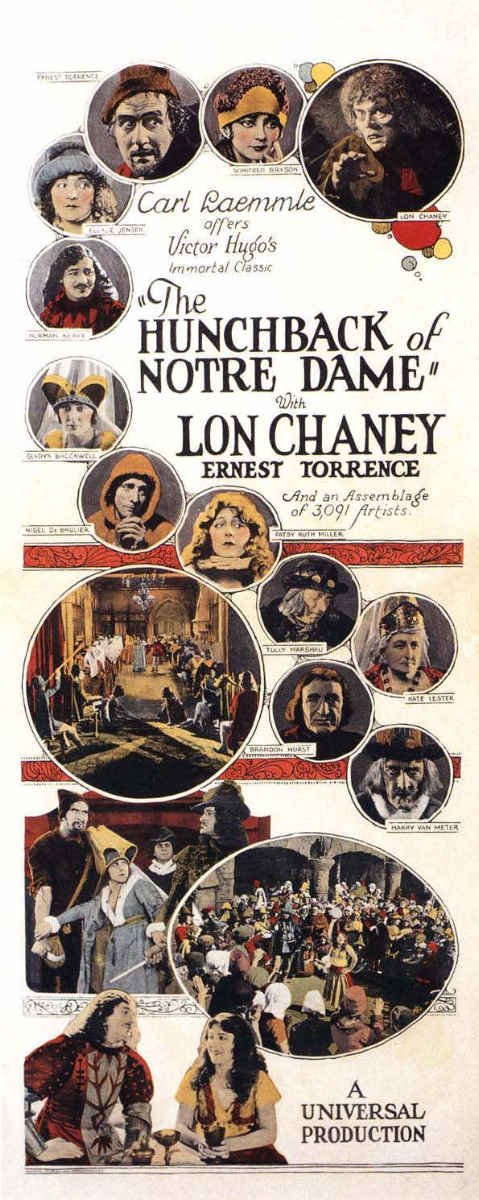
Given a terrific story, Lon Chaney in the role of a lifetime, some of the most spectacular sets ever built in Hollywood, a cast of thousands and a decent cinematographer, even Wallace Worsley could make a great movie — and in The Hunchback Of Notre Dame I think he did.
There's a lot about the film one could criticize. Much of the filmmaking and much of the acting, apart from Chaney's, is merely serviceable. Worsley can be clumsy in his staging of ensembles and in his handling of the comic relief. But with a film this entertaining, a film that showcases a performance like Chaney's, criticism seems a bit churlish.
Chaney's performance is highly theatrical, highly stylized, but it's always calculated in terms of movement, of dance. His physical presence is never less than riveting. He doesn't stint on the grotesque aspect of Quasimodo, whose teeth seem to be rotting out of his head and whose tongue flicks out like a lizard's when he gets excited. He's genuinely repellent — which only makes the revelation of his kind heart more affecting.
Orson Welles said that as a kid he never had much interest in movies as a medium per se — what he was interested in was movie actors, and he singled out Chaney's Quasimodo as one of the performances that most inspired him. This probably had a lot to do with Welles's lifelong interest in make-up effects, especially his obsession with facial applications, which he wore in almost all of his stage and screen roles.
In The Hunchback, Chaney's Quasimodo pops in and out at irregular intervals through most of the film. When he takes center stage in the final reels, the movie sings as only a silent film can. Chaney dances to a melody that only he and Quasimodo can hear — until suddenly, by following the shapes and rhythms of the dance, we can hear it, too. It's a kind of miracle.
Sadly, the film survives only in poor prints. Kino's recent “Ultimate Edition” on DVD is mastered from what's identified as an “original”
tinted print, and it's not bad, considering. The movie still manages to shine through the scratches — and makes one dream about what the thing must have looked like on its initial release. The Kino edition also offers a fine commentary by Michael Blake, Chaney's biographer and a make-up artist himself, who provides a wealth of information about the cast members and the production. The musical score, complied by Donald
Hunsberger and orchestrated and conducted by the always reliable Robert
Israel, is first-rate.
